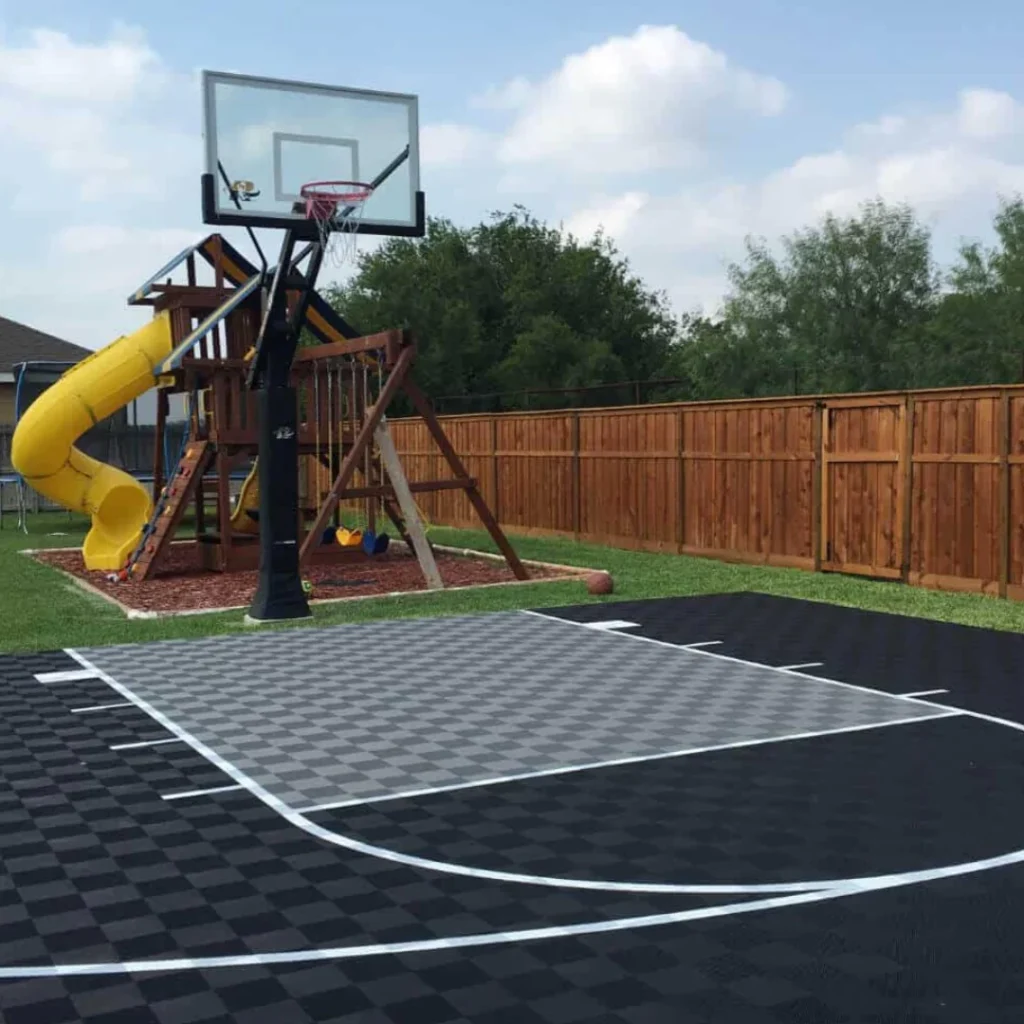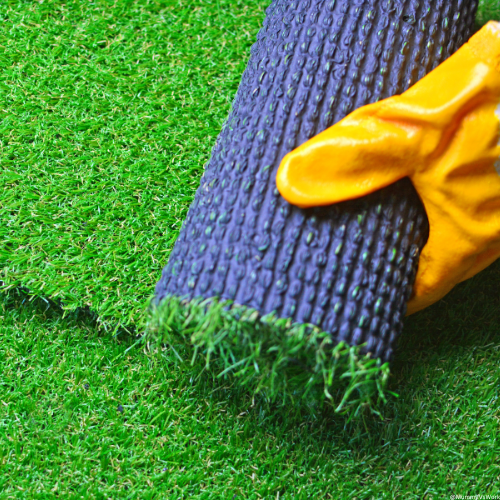Outdoor Play Area Flooring Ideas: A Quick Buying Guide
#Collaborative post
Creating a safe and enjoyable outdoor play area for children requires careful consideration of the flooring options. The right flooring not only enhances the play experience but also ensures safety and durability. Whether you are designing a back garden play area or a playground for schools and community spaces, there are several excellent outdoor play area flooring ideas to consider. This guide explores various playground flooring options, including rubber tiles, artificial lawn grass, mulch, sand, and poured rubber, detailing the different buying choices and best features.
1. Rubber Tiles
Rubber tiles are the perfect outdoor play area flooring choice for children’s outdoor play areas and school playgrounds due to their safety features, ease of installation and low maintenance. These tiles typically interlock with pins, creating a stable and durable surface that remains in position. They provide an excellent support base for heavy playground equipment such as climbing frames, slides and trampolines while adding a layer of slip resistant cushioning against trips, falls and other hazards. One of the best features of these outdoor play area flooring tiles is their tolerance for all types of weather. Designed to endure wet conditions and high temperatures, with built-in drainage, these playground flooring mats are the go-to option for schools and domestic play areas alike.
Thickness and Safety: Rubber playground tiles come in various thicknesses, usually ranging from 25mm to 75mm. Thicker tiles offer better shock absorption, which is crucial for minimizing injuries from falls.
Price Range: The cost of rubber playground flooring tiles can vary. On average, expect to pay between £20 to £40 per square metre, depending on the thickness and quality. For a 4 year warranty and a premium collection of outdoor playground tiles, browse the Sprung Gym Flooring range.

Benefits:
- Safety: Excellent shock absorption and non-slip surface reduces injury risk
- Durability: Weather-resistant and long-lasting. No surface water can penetrate through to the tiles causing water damage or mould.
- Maintenance: Easy to clean and maintain.
- Installation: Interlocking design allows for straightforward installation
- Eco-Friendly: Made from recycled rubber, rubber playground flooring tiles are environmentally conscious.
2. Artificial Lawn Grass
Artificial lawn grass offers a vibrant and natural look for an outdoor playground. Available in different colours, it can transform any space into an appealing and fun learning environment for kids.
Thickness and Variety: Artificial grass comes in various pile heights, typically ranging from 20mm to 40mm and are available in either rolls or grass mats. The colour options, such as green, blue, or even multicoloured grass, can add a playful touch.
Price Range: The cost of synthetic grass or grass mats generally ranges from £15 to £30 per square metre, depending on the quality and pile height.
Benefits:
- Aesthetics: Provides a natural, lush appearance.
- Safety: Soft surface reduces the risk of scrapes and bruises.
- Maintenance: Requires minimal upkeep—no watering or mowing.
- Versatility: Suitable for a variety of outdoor play areas.

3. Mulch
Mulch is an eco-friendly option made from shredded wood or rubber. It’s ideal for playground flooring due to its natural look and cushioning properties.
Thickness and Installation: A layer of 300mm is recommended for effective cushioning. Regular replenishment is necessary to maintain the appropriate depth.
Price Range: Wood mulch costs around £5 to £10 per square metre, while rubber mulch is slightly higher, ranging from £15 to £25 per square metre.
Benefits:
- Safety: Excellent impact absorption properties.
- Eco-friendly: Especially wood mulch, which is biodegradable.
- Aesthetics: Provides a natural, earthy look with a choice of colour options
- Maintenance: Requires periodic top-up to maintain depth.
4. Sand
Sand is a classic and budget-friendly option for children’s outdoor play areas. It offers a soft landing surface, ideal for playgrounds with climbing equipment.
Thickness and Maintenance: A recommended depth of 300mm provides sufficient cushioning. Regular raking and top-ups are necessary to maintain an even surface.
Price Range: Sand is one of the more affordable options, costing between £5 to £10 per square metre.
Benefits:
- Safety: Soft and forgiving surface.
- Cost-effective: Low initial investment.
- Play Value: Great for creative and sensory play.
- Maintenance: Needs regular raking to stay even.
5. Poured Rubber
Poured rubber, also known as wet pour rubber, creates a seamless and highly durable playground flooring surface. It is often used in larger playgrounds and community spaces due to its superior safety features.
Thickness and Installation: Thickness can vary from 25mm to 100mm, depending on the height of the play equipment. Professional installation is required, which adds to the cost but ensures a flawless finish.
Price Range: The cost is higher, typically ranging from £40 to £70 per square meter, but it offers long-term value.
Benefits:
- Safety: Provides superior shock absorption and stability for climbing frames and other heavy playground equipment.
- Durability: Highly resilient and long-lasting.
- Maintenance: Low maintenance and easy to clean.
- Customization: Available in various vibrant colours and designs with the ability to include your own creative patterns and custom look.
Choosing the Right Playground Flooring
When selecting outdoor surfacing for a play area, consider the specific needs of the space, including the type of play equipment, the level of use, and the aesthetic you wish to achieve. Also think about the existing surface or subfloor (concrete, grass, tarmac, wood) and what preparation you may need to consider for installation.
Each option offers unique benefits:
- Rubber tiles and poured rubber are ideal for high-traffic areas requiring maximum safety and protection
- Artificial lawn grass and mulch provide a natural look and are great for versatile play spaces.
- Sand is perfect for budget-friendly, creative play areas.
By evaluating these factors and understanding the benefits and costs associated with each type, you can make an informed decision that ensures a safe, fun, and attractive play area for children.
Conclusion
Investing in the right outdoor play area flooring is crucial for the safety and enjoyment of children. Whether you’re creating a playground in your back garden, a nursery play area or developing a community play space, options like rubber tiles, artificial lawn grass, mulch, sand, and poured rubber offer excellent solutions. Each type has its unique advantages, making it easier to find the perfect match for your specific needs and budget. The UK market has a ton of great product options available to experiment with creative layouts and different play themes. Explore these playground flooring options to create an inviting and safe play environment that children will love.
One Comment
Comments are closed.